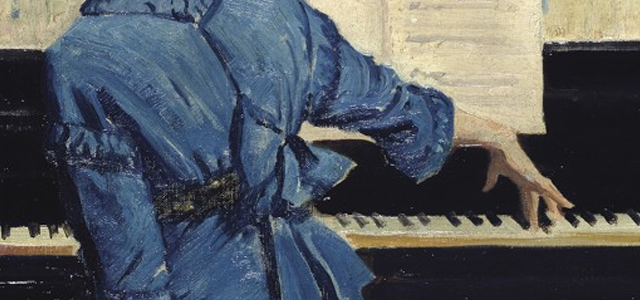A Coveted Possession: the Rise and Fall of the Piano in Australia, La Trobe Uni Press.
Girls at the Piano, Virginia Lloyd, Allen and Unwin.
My mum was a piano teacher and a childhood memory is our house filled with the sound of the piano. As romantic as that might sound, it was often simply children practicing scales and phrases being repeated over and over while Mum encouraged and admonished. A few decades on, learning the piano is still a part of children’s education, and indeed, the piano is a good grounding for learning music generally. My son is learning the piano, although he plays a keyboard rather than a piano, reflecting the decline of the heavy, boxy, wood and wire thing in the living room corner.
Pianos are now something of a luxury object – not really obsolete but, like the gramophone, exchanged for the electronic version. The real thing can be prohibitively expensive to purchase, costly to maintain and keep in tune, and are a burden when moving house. They are also not necessarily easy to fix, and today broken or even just unwanted pianos are dumped and destroyed, though this is not just a recent problem. Though we think of modern society as an exclusively disposable one, in his book Blue Lake David Sornig describes a huge bonfire of pianos beyond repair at the West Melbourne tip in 1914.
In his book on the history of the piano in Australia Michael Atherton describes how the piano was seen as a household necessity, like a television today. A piano arrived in Australia with the First Fleet. In the ‘golden age’ of the piano (late 1800s to mid-1900s), they became cheaper, cheaply printed sheet music was available and pianos became an essential aid to entertainment, especially before the invention of radio. Pianos were also a middle class status symbol.
Great efforts were made to ship pianos from Europe, and they were hauled across the country by horse, bullock and camel. They were ubiquitous in town halls, schools, pubs, church halls and the military. For injured servicemen pianos contributed to what we would now term music therapy. Pianos were sent on warships. There were pianos in the jungles of Papua New Guinea and at Changi, where internees even snuck out in the middle of the night, stole and carried a piano back to the prison camp.
(One thing underplayed in Atherton’s book is recognition of the importance of pianos for churches. He differentiates between the organ as the church instrument and the piano as the everyday instrument, but pianos were used in Sunday schools, choir practices and school chapels.)
The Australian climate warped pianos, easily sending them out of tune, until, in the middle of the nineteenth century, iron frames were invented, creating a sturdier piano that stayed in tune longer. The first Australian pianos were made also in the mid-nineteenth century, competing with German pianos, considered the best. As in other areas, there was some ‘cultural cringe’ regarding buying local, but there was a healthy local industry. When WWI hit, German pianos went out of favour, though they still kept coming – the importers simply removed the German names. These days the best pianos are German, but also Japanese, and there is a burgeoning industry in China, though there are also local, boutique manufacturers, still innovating.
Virginia Lloyd’s Girls at the Piano is less about the piano, and more about the pianist, and more lyrical and introspective. Her memoir describes being able to sight-read the piano at school. She had perfect pitch and was destined for a musical career, but she also stalled—didn’t touch the piano for years—only later returning to it with a yearning to understand what this all meant.
In her memoir she recounts the tedium of practice and lessons, but also how the love and learning of music connects to and enhances other areas of life. She looks at how music connects people beyond the normal conventions of relations between the sexes and different age groups. Music can give a shy person feelings of power and confidence, and how learning music contains the thrill of ‘unlocking a mystery’.
In particular, the book is about the female pianist and how learning the piano has, over the last century and a half, been an expectation in the education of girls. Yet until recently there have been few female concert pianists. Lloyd notes how, as with other pursuits, in polite society it was thought unseemly for women to perform in public, or even to improvise. Lloyd describes, her own love of improvisation, its subversive thrill, of playing in a jazz band. The thrill where, though she doesn’t describe it that way, the jazz musician’s role is like a footballer’s combination of skill, drilled behaviour and adrenaline-fuelled, intuitive, snap decision-making.
Nick Mattiske blogs on books at coburgreviewofbooks.wordpress.com












